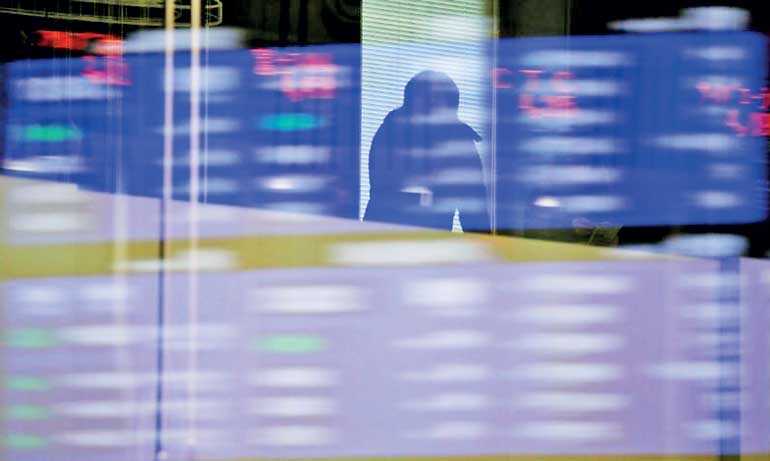Thursday Mar 06, 2025
Thursday Mar 06, 2025
Tuesday, 8 May 2018 00:00 - - {{hitsCtrl.values.hits}}

LONDON (Reuters) - Oil prices jumped to their highest since late 2014 on Monday on a deepening economic crisis in Venezuela and worries that the Unites States could re-impose sanctions on Iran, while stocks firmed and the dollar rose towards its 2018 peak.
With trade thinned by a holiday closure in London, European shares opened higher, boosted by energy stocks as well as encouraging earnings updates.
Heavyweight Nestle also gained after the Swiss-based food firm agreed a tie-up with Starbucks.
Most Asian markets also rose after Friday’s tame reading on U.S. wage growth lessened chances of a pick-up in the pace of interest rate hikes by the Federal Reserve. Gains were capped by Sino-U.S. trade tensions.
U.S. equity futures pointed to a positive open for Wall Street.
The day’s eye-catching moves came in energy markets.
U.S. crude oil prices rose 70 cents, or 1%, pushing above $70 a barrel for the first time since November 2014 as the crisis in OPEC member state Venezuela threatened to further crimp its production and exports.
Brent crude oil futures were at $75.55 per barrel at 0945 GMT, up 0.9% and having also touched their highest since November 2014.
Also driving oil prices higher was the May 12 deadline set by U.S. President Donald Trump for Europeans to “fix” the deal with Iran over its nuclear program. If they do not, Trump has said he would refuse to extend U.S. sanctions relief for the oil-producing Islamic Republic.
The European oil and gas share index was up 0.4%.
“All in all it’s a positive environment for the equity markets,” said Niels Christensen, chief analyst at Nordea in Copenhagen.
The dollar strengthened back towards the 2018 peak it reached on Friday, when investors shrugged off the weaker-than-expected jobs report to extend the currency’s 2-1/2 week-long rally.
The dollar, which has enjoyed a sudden reversal in fortunes as investors bet on more Fed rate hikes and a slower pace of tightening in the euro zone, rose 0.3% versus the euro to $1.1928.
Measured against a basket of currencies, the dollar index was 0.3% stronger at 92.811, not far from the 92.9 it hit on Friday - its highest since December.
In data from the euro zone’s largest economy Germany, industrial orders unexpectedly dropped for the third month running in March, suggesting factories there are shifting into lower gear.
The week ahead includes readings on the health of the Chinese economy and, U.S. inflation ,and a Bank of England monetary policy meeting.
“Looking at the U.S. economic data, everything is looking quite positive. No one expects higher interest rates to be a brake on economic growth,” said Christensen.
The soft German data supported euro zone government bond markets as investors continued to bet on caution from the European Central Bank.
“A lot has been repriced in terms of the ECB so the outlook for bonds is a bit more mixed,” said Commerzbank rates strategist Rainer Guntermann.
Discover Kapruka, the leading online shopping platform in Sri Lanka, where you can conveniently send Gifts and Flowers to your loved ones for any event including Valentine ’s Day. Explore a wide range of popular Shopping Categories on Kapruka, including Toys, Groceries, Electronics, Birthday Cakes, Fruits, Chocolates, Flower Bouquets, Clothing, Watches, Lingerie, Gift Sets and Jewellery. Also if you’re interested in selling with Kapruka, Partner Central by Kapruka is the best solution to start with. Moreover, through Kapruka Global Shop, you can also enjoy the convenience of purchasing products from renowned platforms like Amazon and eBay and have them delivered to Sri Lanka.
Discover Kapruka, the leading online shopping platform in Sri Lanka, where you can conveniently send Gifts and Flowers to your loved ones for any event including Valentine ’s Day. Explore a wide range of popular Shopping Categories on Kapruka, including Toys, Groceries, Electronics, Birthday Cakes, Fruits, Chocolates, Flower Bouquets, Clothing, Watches, Lingerie, Gift Sets and Jewellery. Also if you’re interested in selling with Kapruka, Partner Central by Kapruka is the best solution to start with. Moreover, through Kapruka Global Shop, you can also enjoy the convenience of purchasing products from renowned platforms like Amazon and eBay and have them delivered to Sri Lanka.